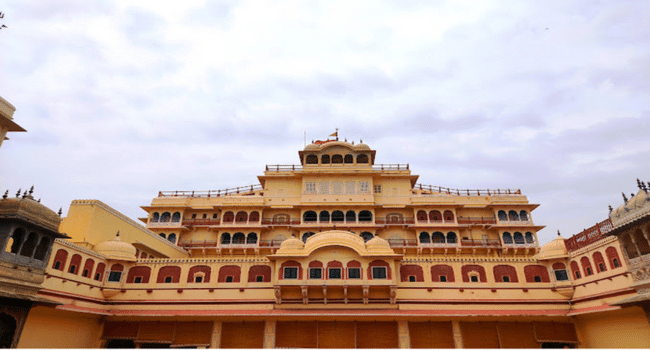Table of Contents
Located in Jaipur’s City Palace, the Maharaja Sawai Man Singh II Museum was established in 1959. The Mughal and Rajasthani architectural styles blend flawlessly here. This museum is renowned for its enormous collection of artwork, rugs, enamelware, and weapons from the fifteenth century. The Maharaja Sawai Man Singh II Museum is housed in a stunning compound with several courtyards, structures, and gardens.
You can use your MasterCard to travel to the destination and explore the artefacts.
The Museum
The museum has two entrances: Tripolia Gate and Jaleb Chowk. The Mubarak Mahal is the first structure one sees upon approaching the Tripolia gate. On the first floor of Mubarak Mahal is a textile museum, while the ground floor houses an office and a library.
You enter the Diwan-i-Khas, known as the Chamber of Private Audience, after passing the Mubarak Mahal through a regal brass door. The Diwan-i-Khas contains two of the largest silver urns in the world.
Another room is the Diwan-i-Aam, also known as the Hall of Open Audience, which houses texts written in Persian and Sanskrit. The seven-story Chandra Mahal, known as the Moon Palace, is a complex. Rugs, swords, and rare items are exhibited on the first two floors, while the fourth story is decorated impressively with mica, gold leaves, and mirrors.
Collections
-
Fabric Gallery
The Mubarak Mahal, a structure created to host royal visitors, has a textile exhibition on the ground floor. Through a wide range of fabric samples and costumes from the past three centuries, the displays introduce visitors to the rich legacy of Indian textiles acquired and gathered by the Jaipur Court.
-
Sarvato Bhadra
The Sarvato Bhadra, a sizable open pavilion with substantial stone columns, was the main power centre of the court, where the Maharajas held council meetings with their courtiers, ministers, and nobility to discuss the important matters affecting their realm. Currently, the main exhibits are two exquisite silver urns, Gangajalis, listed in the Guinness Book of World Records. The area is maintained for its customary function as the focus of rites and festivals, where guests are welcome to take part.
-
Sabha Niwas
The governing Maharaja created the Sabha Niwas, which served as the state’s throne room for ceremonial gatherings of Thakurs, court officials, and foreign guests. British viceroys, emissaries from neighbouring Indian states, and citizens were received in the Jaipur court in the early days.
The historical room features authentic furnishings, artwork, lighting, and a special exhibition of ceremonial attire and medals. The Baggi Khana exterior is intended to display notable items from the collection.
-
Sileh Khana
The Sileh Khana exhibits the royal arsenal of weapons and armour, which includes shields, swords, axes, arrows and bows, daggers, chain armour, goads, maces, and gunpowder jars. Highlights include the inscribed weaponry of famous historical figures like the Mughal Emperors Jahangir and Shah Jahan. The magnificent hall, previously known as the Anand Mandir, or home of happiness, was designed for entertainment and has breathtaking ceiling murals.
-
Painting and Photography
The Maharaja Sawai Bhawani Singh building’s new exhibition, Painting and Photography in the Jaipur Court, features the museum’s renowned collection of visual art. Highlights span the 18th to 20th centuries and include the classical themes of the Ragamala, Krishna Leela, and portraits, as well as the Hindu mythical painted manuscript series of the Durga Saptashati and Bhagvata Puran. Additionally, it displays the collection’s photographic gems, which include pictures taken by Maharaja Sawai Ram Singh II and his successors.
The museum also has nationally significant collections of manuscripts, carpets, ornamental arts, maps, and blueprints in reserve.
-
‘Pothikhana’ Archives and Library
The Pothikhana archives of the MSMS II Museum are among the best in India and contain more than 7866 manuscripts with handwriting and more than 225 traditional-style maps.
The majority of the maps in the Pothikhana are hand-drawn and detailed sheets of various sizes. These traditional cartographic examples include holy sites, regional geographic features, and both real and imagined cityscapes.
The open-shelf public range of the museum’s library reading room has more than 15,000 books and journals. By appointment only, scholars and researchers may access the archive and library.
Time: 9.30 a.m. to 5 p.m. Sundays and government holidays are also holidays.
So, stir up your creative side and venture beyond the norm with a special collection of works of art and cultural activities at the Maharaja Sawai Man Singh II Museum.
Read More on KulFiy
Know How Much Tax Your Life Insurance Saves?
How To Do Life Insurance – Step By Step Guide
